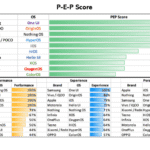The headline sounds bleak because the reality is bleak! Social platforms promised connection, creativity, and community — yet billions of young people log in every day into spaces that too often expose them to harassment, manipulation, and content adults promised would be kept ‘safe’. Despite a decade (or more) of warnings, studies, and public scandals, there still isn’t a reliable, child-proof safety net on most mainstream social networks. This post explains why that gap persists, what it means for kids and teens, and the concrete ways the digital world is shaping — and sometimes warping — a generation’s view of themselves and the world.
Social media as second home: how it became an integrated part of life
Ask any teen where they spend their free time and the answer will likely include at least one social app. Social media is no longer an occasional distraction — it’s woven into schooling, friendships, identity formation, entertainment, and even civic life. Homework gets coordinated over group chats, activism organizes on short-form video, and first crushes (and public breakups) play out in livestreams. For many adolescents, the boundary between “online” and “real life” is nearly indistinguishable.
That integration brings benefits: easier connection across distance, platforms for creative expression, and rapid access to information. But when a tool becomes a primary space for social development, problems compound: social norms form in public comment threads, mistakes get archived, and the pressure to perform is constant. Younger children who once developed social skills in the playground now learn them in feed algorithms and notification spikes — and platforms were not designed with developmental psychology as their north star.

Invisible and visible harms: cyberbullying, identity theft, and exploitation
Kids face both the familiar and the new. Cyberbullying remains pervasive — but it’s not always a playground taunt; it can be coordinated harassment across dozens of accounts, recorded, shared, and weaponized. Public shaming has a permanence that schoolyard teasing never had. Then there’s doxxing and identity theft: poorly protected accounts and overshared personal info let bad actors impersonate, extort, or fraudulently enroll kids in services. Younger users are prime targets for scams and phishing because they often lack experience spotting manipulation. Exploitation continue to occur in private messages and closed groups. The mixture of anonymity, algorithmic introduction to “like-minded” people, and platforms’ reward systems for engagement create fertile ground for predators. Add on hate speech, targeted harassment based on intersectional identities, and the transfer of offline conflicts into online spaces — and you have a landscape where the stakes of a single interaction can be life-altering.

Algorithmic exposure: how unhealthy content reshapes young minds
Algorithms are optimized for attention, not wellbeing. They amplify what keeps users scrolling — outrage, sensationalism, and strong emotions — without caring whether the content is appropriate for a developing brain. For teens, that means a fast route from a harmless trend to content that normalizes self-harm, disordered eating, extremist views, or distorted relationship norms.
Young minds are especially susceptible to social comparison. Constant exposure to curated, filtered images and highlight reels distorts expectations about bodies, success, and happiness. Worse, algorithmic systems can create reinforcing loops: a curious click into dieting content can cascade into an obsession; one search about despair can open channels that normalize self-harm. The result is not only individual harm (worse body image, anxiety, depression) but a collective shift in what adolescents believe is “normal” or acceptable.
The privacy paradox: data collection, surveillance, and commercializing childhood
Children generate enormous amounts of behavioral data: watch histories, typing patterns, interaction graphs. Platforms monetize that data through targeted ads, influencer marketing, and content optimization. The result is a double whammy: kids are not only being exposed to harmful content, they’re being profiled and marketed to while in a vulnerable developmental window. Age verification is often weak, so advertisers and third parties gather data under parents’ radar. Microtargeted ads push gambling mechanics, cosmetic procedures, or risky products directly at impressionable users. Surveillance also affects learning and agency; when children internalize that their choices are tracked and scored, they can self-edit in ways that limit experimentation and exploration — crucial parts of growing up.

Broken safety nets: why current tools and policies fall short
If platforms were truly committed to childhood safety, we’d see three things consistently: strong age checks, proactive moderation tuned to developmental needs, and transparent (and enforceable) policies. Instead we get a patchwork:
- Parental controls exist but are inconsistent, confusing, and often easy to bypass.
- Moderation is reactive, driven by user reports; automated systems flag content en masse but struggle with context — leading to both harmful content slipping through and wrongful takedowns.
- Cross-platform behavior is poorly managed: a banned user on one app can simply migrate to another, recreating harm.
- Commercial incentives reward growth above safety. More daily active users and more time on app = more ad revenue. That economic pressure dilutes the urgency of robust safety investments.
Regulation has moved some things forward, but enforcement and global coordination lag. Technology companies make promises, but implementation is spotty and slow. Meanwhile, children are exposed today — not “when the safety features are ready next quarter.” https://www.thehindu.com/sci-tech/technology/instagrams-teen-safety-features-are-flawed-researchers-say/article70096274.ece

What parents, educators, platforms, and policymakers can actually do
This is not a “blame only the platforms” essay. Real change needs multiple actors:
- Parents: build digital literacy early. Talk about privacy, consent, and red flags for manipulation. Set clear boundaries around screen time and device-free times — but focus on guidance, not only blocking.
- Educators: integrate critical thinking and media literacy into curricula. Teach students how algorithms work and how to verify information.
- Platforms: apply age-appropriate design, stronger onboarding age verification, more human moderation, and safety-first algorithmic choices (reduce amplification of extreme or self-harm content).
- Policymakers: enforce transparency requirements for recommendation systems, require child data safeguards, and make sanctions for repeated safety failures meaningful.
- Young people themselves: empower peer-led safety initiatives. Adolescents often listen to peers; programs that train youth moderators and safety ambassadors can be effective.
- Even AI today’s fastest growing part of online presence is taking this seriously- https://www.thehindu.com/sci-tech/technology/openai-adds-parental-controls-to-chatgpt-for-teen-safety-heres-how-to-use-them/article70111524.ece
Conclusion — a pragmatic call to attention
Social media is a powerful tool, and its integration into young lives is irreversible. That truth cuts both ways: it can open doors to learning, creativity, and solidarity — or it can prime a generation for anxiety, mistrust, and harm. The key question is not whether we can protect kids perfectly (we can’t), but whether we are willing to prioritize their wellbeing over engagement metrics and ad revenue.
So: read that notification, have the hard conversation, support reforms, and demand better from platforms. Want to take one small step right now? Ask a teen in your life what app they use most and one thing they wish were different about it — you’ll get a clearer picture than any statistic
The Images have all been generated using Nano Banana AI and do not represent any real life person, to know more about how that works, read more about it at our blog on Nano Banana AI.





